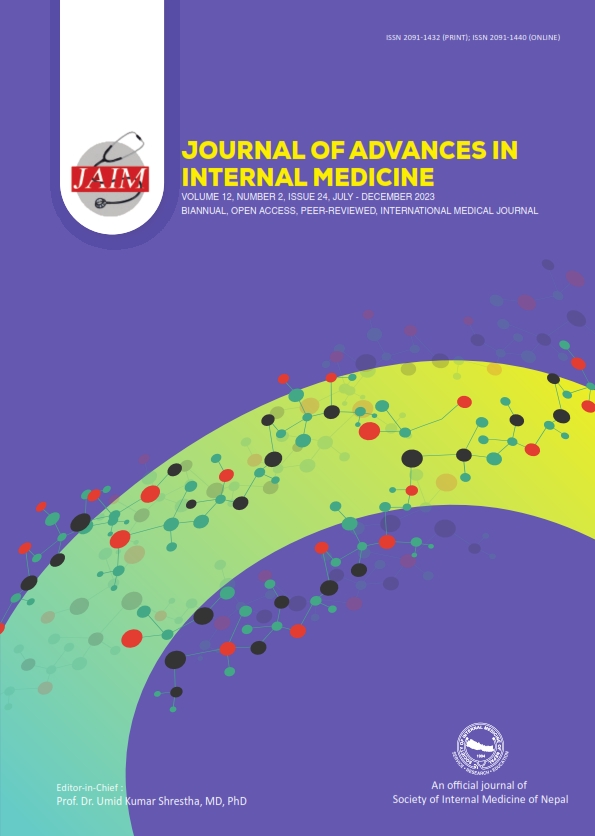Holter ECG Monitoring in Assessing Arrhythmias in Patients with Palpitation
DOI:
https://doi.org/10.3126/jaim.v12i2.62076Keywords:
ECG, Arrhythmia, PSVTAbstract
BACKGROUND Palpitation is one of the most common indications for Holter study. 24- hour Holter monitoring helps to detect abnormal cardiac rhythm which can be managed earlier if picked up sooner. Spot ECG has less sensitivity to pick episodic abnormal rhythm so longer monitoring time is essential. Various treatment modalities can thus be planned for non-benign and relatively benign arrhythmias like VT and PSVT respectively.
METHODS This was a single center prospective observational cross-sectional study conducted at BPKIHS, Dharan for three months between July 2023 to September 2023. The primary objective was to study abnormal cardiac electrical events in patients having palpation. There were 38 patients of palpitations that underwent 24-hour Holter study after fulfilling inclusion criteria. The data was recorded on an excel sheet and was analyzed using software SPSS 20.
RESULTS There were 47.4% (18) males and 52.6% (20) females. The mean age was 49.61± 17.63 years. There were 36.8% (14) patients in age group <45 years while 42.1% (16) were in age group 45 to 65 years and 21.1% (8) were in the age group >65 years. The maximum and minimum Heart rate were 180 and 35 beats per minute respectively. There was abnormal Holter ECG in 57.9% (22) and 42.1% (16) had normal ECG. Most common arrhythmia was VPC 17(77.2%) in our study. The association between the age group and Normal vs Abnormal Holter ECG was statistically significant (P Value=0.023) (Table 8). DM was the most common co-morbid illness in 5(13.2%), one participant had DM and HTN along with Dyslipidemia and other findings were smoking (5.3%), dyslipidemia (5.3%). There was no association between comorbid conditions and normal vs abnormal ECG Holter rhythm (P Value = 0.448).
CONCLUSION Out of 38 participants VPC was the most common (77.2%) arrhythmia. The association between Age group and Normal vs Abnormal Holter was statistically significant (P Value=0.023). Most of the arrhythmias were benign. Diabetes was the most common risk factor present while 50% of subjects had no co-morbid illness.
Downloads
Downloads
Published
How to Cite
Issue
Section
License

This work is licensed under a Creative Commons Attribution 4.0 International License.
This license enables reusers to distribute, remix, adapt, and build upon the material in any medium or format, so long as attribution is given to the creator.




